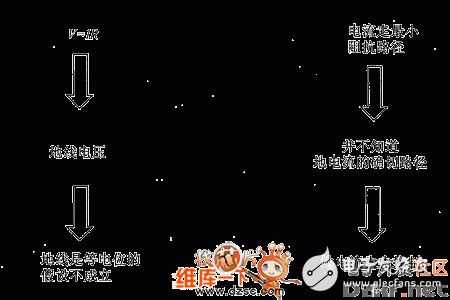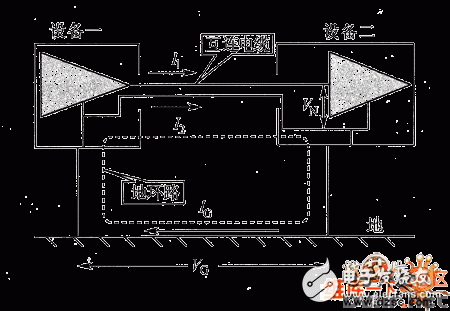The electromagnetic compatibility problem caused by grounding is mainly ground interference, which is a thorny problem that no one can solve. When an experienced designer analyzes an interference fault, although he knows to use an oscilloscope to check the noise voltage on the ground, the cause of this noise is not very clear. The result is often in the face of noise voltage. In order to solve this dilemma, it is easy to find the secret of ground noise by applying signal ground and combining circuit common sense.
First, the ground wire is not an equipotential body. According to Ohm's law, when a current flows through a resistor, a voltage drop is generated across the resistor. The actual conductor has a certain impedance, the ground wire is no exception, and the impedance of the improperly designed ground wire is quite large. Therefore, when a current flows through the ground wire, a voltage is generated on the ground line, and the action of the equipotential body is lost.
When designing a circuit, the ground line is often used as the common ground of all circuits. Therefore, the current components on the ground line are numerous and the voltage is also disordered. This is the source of the ground line noise voltage.
• Second, the ground noise voltage has a serious impact on the circuitry. Ground noise means that the ground line is not identical to the ideal case assumed at design time (as the equipotential body of the potential reference point). The potential at each point on the actual ground line is different due to the presence of voltage drop. In this way, the ideal assumption of the design circuit is destroyed, and it is not surprising that the circuit does not work properly. This is the essence of electromagnetic interference caused by ground.
· Furthermore, the choice of ground current flow path is uncertain. The ground current objectively obeys the general rule of current, that is, selects the path with the smallest impedance. For lower frequency currents, this path is easier to determine, which is the path with the least resistance (resistance is related to the cross-sectional area, length, and conductivity of the conductor). However, for a high frequency current, it is difficult to determine the path of the ground current, and the actual ground current does not flow through the ground line originally conceived. The loss of "rational" control of the current creates some inexplicable problems.
Combined with the problem shown in Figure 1, the final goal of solving the grounding electromagnetic compatibility problem is to reduce the impedance of the ground wire.

Figure 1 Electromagnetic compatibility problems caused by grounding
Ground loop interference is another electromagnetic compatibility problem caused by grounding. Interference often occurs between devices that are far apart, and devices are often connected by long cables. The intrinsic cause of this is the presence of ground loop current. Since the ground loop interference is caused by the ground loop current, it is often found in engineering that when the safety ground wire of a device is disconnected, the interference phenomenon disappears because the ground wire is cut off when the ground wire is disconnected. Loop. This phenomenon often occurs when the interference frequency is low. When the interference frequency is high, it has little to do with disconnecting the ground.
As shown in Figure 2, the reasons for the formation of ground loop interference are as follows:
• The ground potentials of the two devices are different, and a ground voltage is formed between them. Driven by this voltage, current flows between the device, the interconnecting cable, and the loop formed by the device 2 and ground. Unbalanced circuits can cause different currents on each conductor, resulting in differential mode interference voltages that can interfere with the circuit. If other devices with higher power share this ground line, it will inevitably cause a stronger current in the ground line, and the ground line has a larger impedance, which eventually leads to voltage interference.
• Since the interconnected device is in a strong electromagnetic field, the electromagnetic field induces a loop current in the loop formed between the device 1, the interconnecting cable, and the device 2 and the ground, which causes interference as the above-mentioned cause.

Figure 2 Formation of ground loop interference
For the reasons of the above-mentioned ground loop, there are two basic ideas for solving the ground loop interference:
· One is to reduce the impedance of the ground wire, thereby reducing the interference voltage;
· The other is to increase the impedance of the ground loop, thereby reducing the ground loop current.
When the impedance is infinite, the easiest way is to disconnect the ground loop. For example, floating the device at one end, or disconnecting the circuit board from the chassis. However, due to electrostatic protection or safety considerations, this method is not allowed in practice. The applicable methods are isolation transformers, optical coupling, common mode chokes, and balancing circuits.
Litium Battery,Li-Ion Battery,Maintenance Free,Lifepo4 Battery
Shenzhen Unitronic Power System Co., Ltd , https://www.unitronicpower.com
